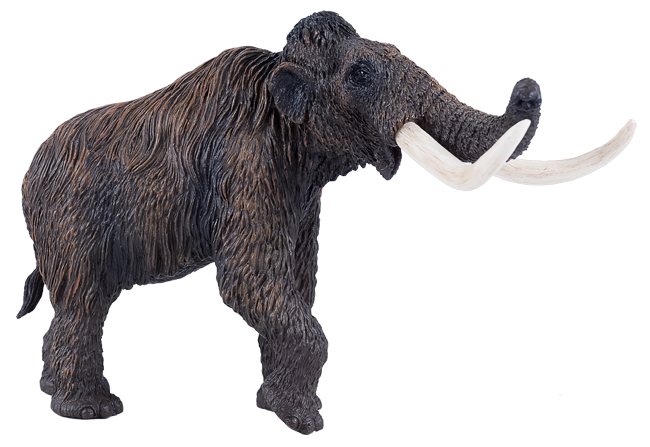Son Finds Mammoth Tusk at Same Location as Mother
Sometimes there can be strange coincidences surrounding fossil finds. On this blog we have reported the discovery of an iguanodont dinosaur bone in Sunderland, the discovery of more dinosaur fossils in a Frenchman’s garden and how a stone ornament turned out to be the remains of a prehistoric fish. However, this week, a story about the finding of a Woolly Mammoth tusk in Alaska caught our attention. The discovery of the four-metre-long tusk is no great surprise, after all, for hundreds of thousands of years, these ancient elephants roamed North America, but in this instance the finder’s mum had found another tusk at the same location twenty-two years earlier.
Mammoth Tusk
Andrew Harrelson was having no luck fishing for Salmon on the Fish River, close to his home in the village of White Mountain about fifty miles east of the settlement called Nome. He decided to wander along the bank to see what the river had washed out of the bank and whether there were any fossils to be found.
At a bend in the river, near to the spot where his mother had found a thirty-six kilogramme mammoth tusk back in 1992, he spotted a large Mammoth tusk eroding out of the sediment. Andrew was only three when his mother found the tusk, he barely recalls the incident, but he did pose for a picture with the fossil, although at the time he had no idea what the strange object was.
Andrew recalled:
“This big, old log-looking thing. I had no clue what it was until they told me.”
The square and blocky teeth (cheek teeth) of Mammoths have also been found at this location, in a bid to explain why this particular area holds a number of Mammoth remains, Mr Harrelson’s father Daniel stated:
“I think at one point, thousands of years ago, it must have been a mud hole or something that animals got stuck in and then died in it. Everything froze in there and then slowly, over time, thaws out a little bit year by year.”
Spotting the Base of the Tusk
When first spotted, only the base of the tusk was exposed, Andrew returned to the spot a little while later and with the help of a relative they were able to prise the four-metre-long tusk out of the riverbank.
Having weighed their fossil find on the bathroom scales the Alaskan family are now the proud owners of seventy-three kilogrammes of Mammoth ivory. Dale Guthrie, a retired palaeontologist from the University of Alaska Fairbanks explained that the Mammoth remains could be anything from 400,000 to just 12,000 years old. He stated that the last glacial period in Alaska occurred around 18,000 years ago with the Mammoths becoming extinct around 12,000 years ago. Radiometric dating was the only technique that could provide a method of determining the fossil’s true age.
A Replica of a Woolly Mammoth
For models and replicas of prehistoric mammals and other extinct creatures: Mojo Fun Prehistoric and Extinct Replicas.
Andrew hopes to sell his lucky find, a question of history repeating itself just twenty-two years after his mum found a Mammoth tusk. He wants to raise funds so that he can use the money raised as a down payment on a family home. Although it is illegal to trade elephant ivory, Mammoth ivory can be sold under certain circumstances, we at Everything Dinosaur believe. Most of Alaska is public land and it is against the law to remove Mammoth fossils from federal or state property without a Bureau of Land Management permit, however, the area surrounding the Fish River is privately held and so long as permission is granted fossils can be collected. As with all these cases, we would urge those involved to check with the authorities with regards to the legal implications for such a sale.







Leave A Comment